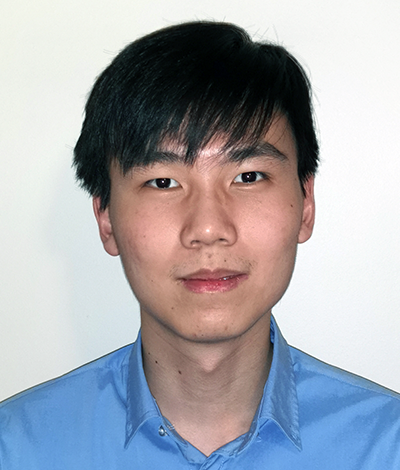Rotational Programs Three Ways
Rotational programs are highly coveted opportunities at major banks and pension funds which allow the successful candidate to gain hands-on work experience in three to four different areas of the institution’s business over a 24-months period. Following the rotation, the institution typically offers fulltime employment in the business area that both the candidate and institution agree is the best fit for the candidate’s skills and the institution’s needs. The recruitment process is very competitive and usually begins a year prior to placement. Some programs are publicly advertised, while others recruit from early talent who have performed well in their internships.
Three new grads from MMF class of 2022 secured rotational programs and are on the job now. Here’s how they did it.
First Way: Quantitative Associate Rotational Program (QARP) at TD, secured by Patrick Ng

Patrick Ng already had experience working at TD Securities as a Market Risk Associate, Global VaR & Stress Analytics Intern in Summer 2021 when he applied to the public call for QARP candidates in August 2021. He did his Winter 2022 internship as an Investment Risk Intern on the Research and Analytics team at Ontario Teachers’ Pension Plan. He received his QARP offer from TD in December 2021 and began his first rotation in August 2022, after completing the MMF program. He’ll complete his final rotation in June 2024.
Securing a rotational program was important to Patrick because it would allow him to explore different quantitative areas in banking and have a broad view of the financial industry. He’d also have a better sense of what he likes doing, and it would give him the chance to form a strong network across the bank. Moreover, rotational programs have strong reputations within the bank so he felt it would help him secure valuable fulltime roles in the future.
His recruitment process consisted of four interviews. The first interview was with a former associate in the rotational program, and he was asked to explain his interest in the program and in working at TD. The second interview was a technical interview with two senior managers, which touched on a wide variety of topics such as statistics, stochastic calculus, coding, options and data science. The third interview and fourth interviews were with the QARP Program Lead and two Vice Presidents, respectively. These interviews explored his character and competencies, and he was again asked why he wanted to join the QARP program. Although the recruitment process was long, as the interviews progressed his desire to join TD’s QARP was consistently reaffirmed.
Patrick thinks what made him stand out was his broad range of work experience and his genuine interest in quantitative areas of the bank. He expressed what his prior work experience taught him, how he grew professionally as a result of those experiences, and what he hopes to do in the future. This allowed the recruiters and interviewers to understand who he is as a person. He also believes having a broad knowledge of quantitative finance topics helped him with the technical interviews. Although he couldn’t answer all the technical questions, he knew the key concepts, which helped interviewers understand his thought process.
Patrick believes the rotational program will positively impact his future employment prospects. The program will give him exposure to four different roles in two years, which will allow him to develop his skills, accumulate knowledge in a variety of quantitative areas and network with different members of the bank. The rotations will also let him gain a better understanding of what areas he’ll want to pursue, saving him time trying to discover what path to take in his career journey.
He’ll rotate through several four departments over the next two years. The rotations that appeal to him the most are within Treasury Balance Sheet Management (TBSM). TBSM interests him because it deals with the entire TD balance sheet and managing its risks. For a bank as large as TD, he’s interested in seeing the strategies TD uses to fund itself and how it chooses to hedge its risks. He’ll also learn about the quantitative models used to support the business.
Patrick’s best advice on applying for rotational programs starts with applying early and making sure your cover letter conveys why you want to join the rotational program and what you can offer the organization. For the interviews, he recommends sharing your story and how your prior experiences led you to apply for the rotational program. For technical interviews, you’ll need to have a broad understanding of a wide variety of topics. “The question themselves are not meant to be very difficult so don’t overthink them,” he says. “Lastly, I would try to think of good questions to ask in each interview. This can help you stand out from other applicants.”
Watch for our next installment of Rotational Programs Three Ways – Second Way: Global Markets Rotational Program at CIBC, secured by Irene Niu and Third Way, Quantitative Risk Rotational Program at CIBC, secured by Hongfei Chen
